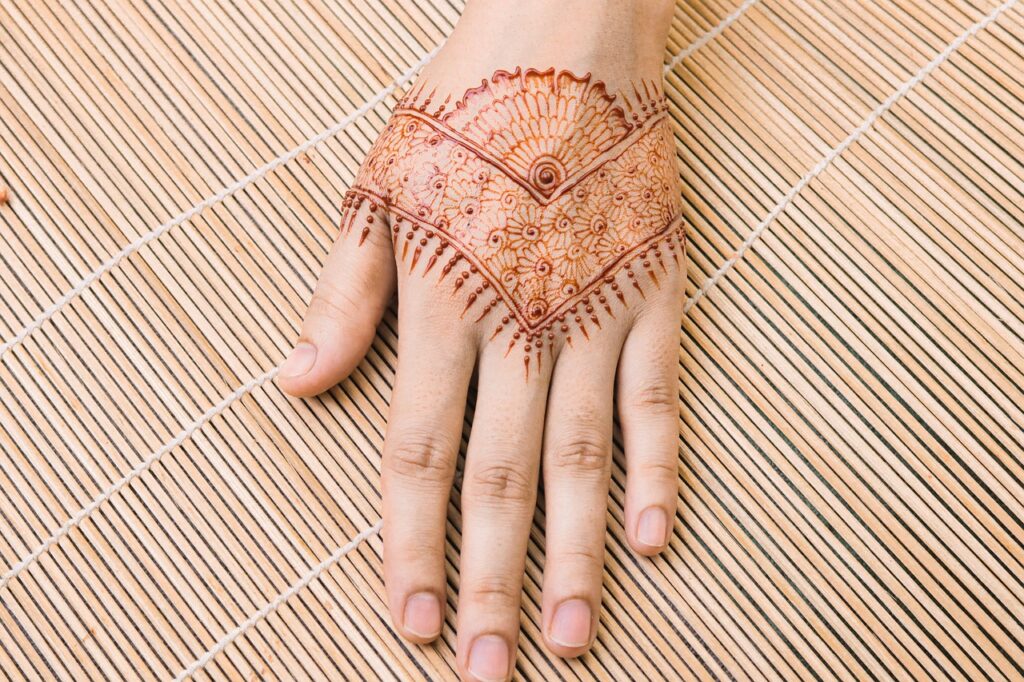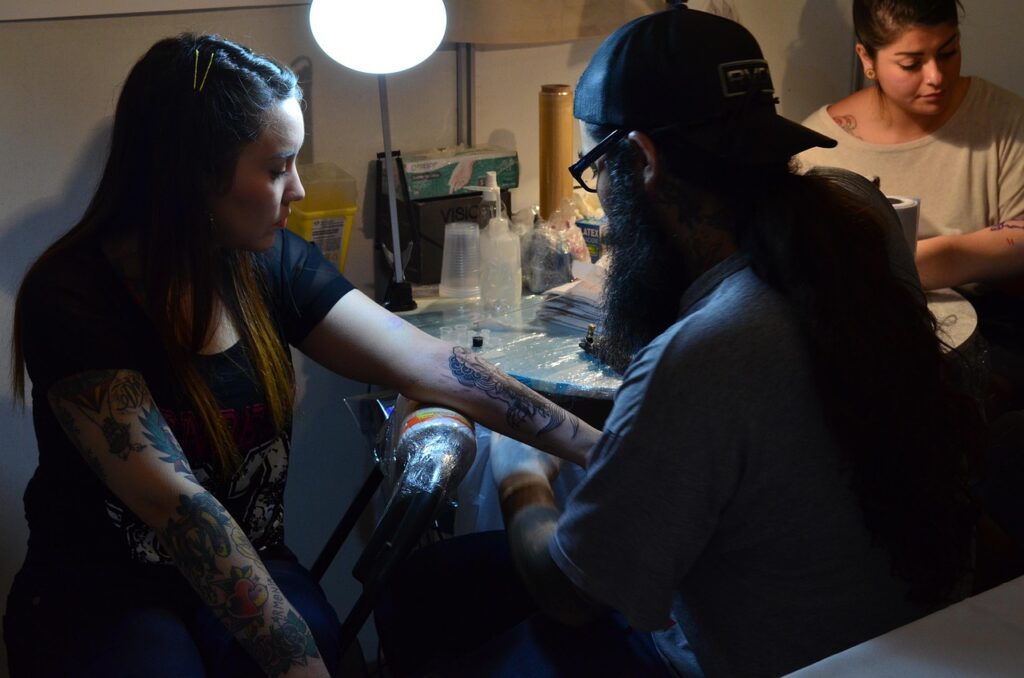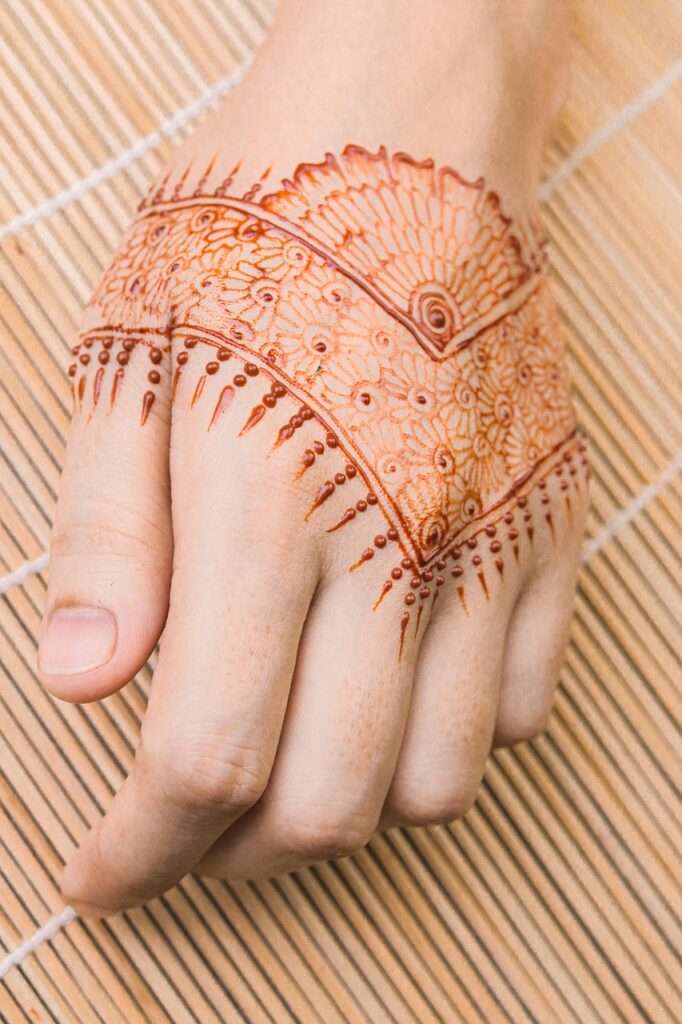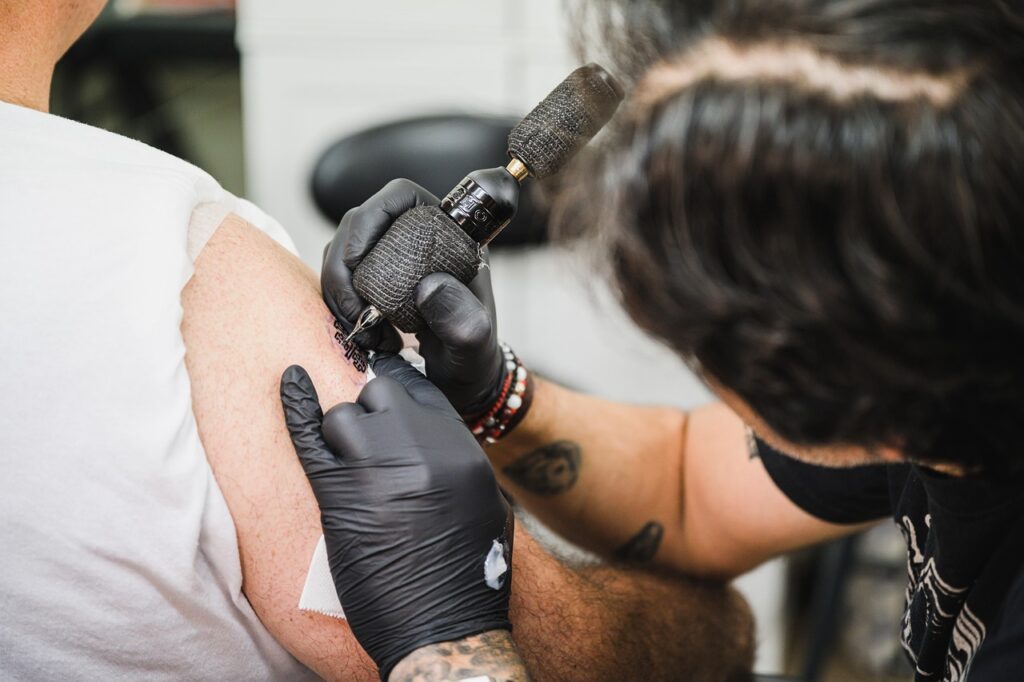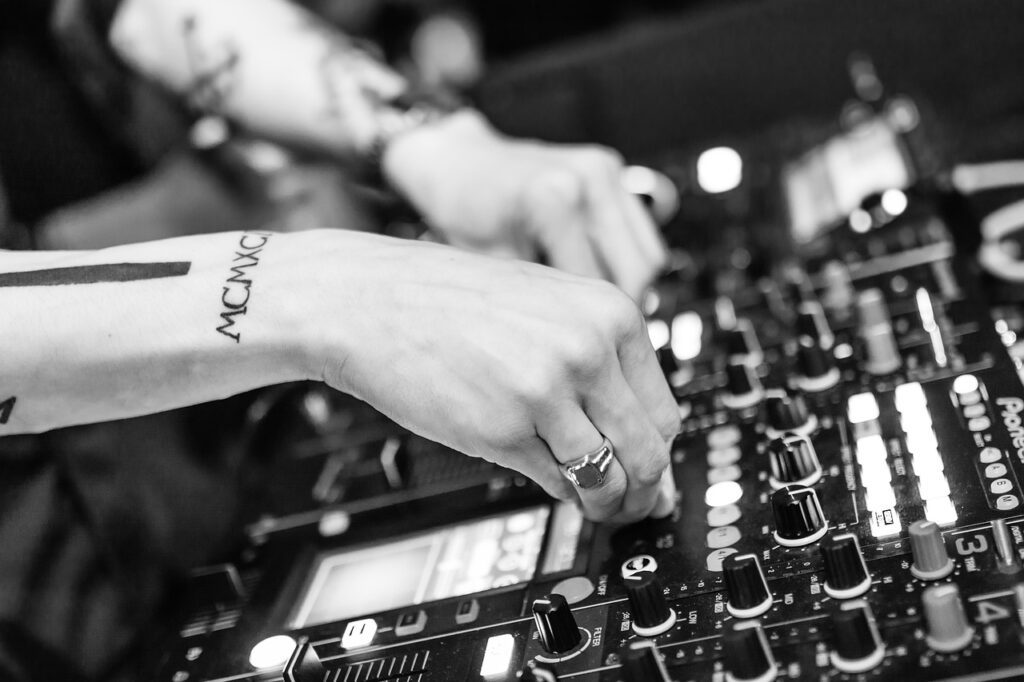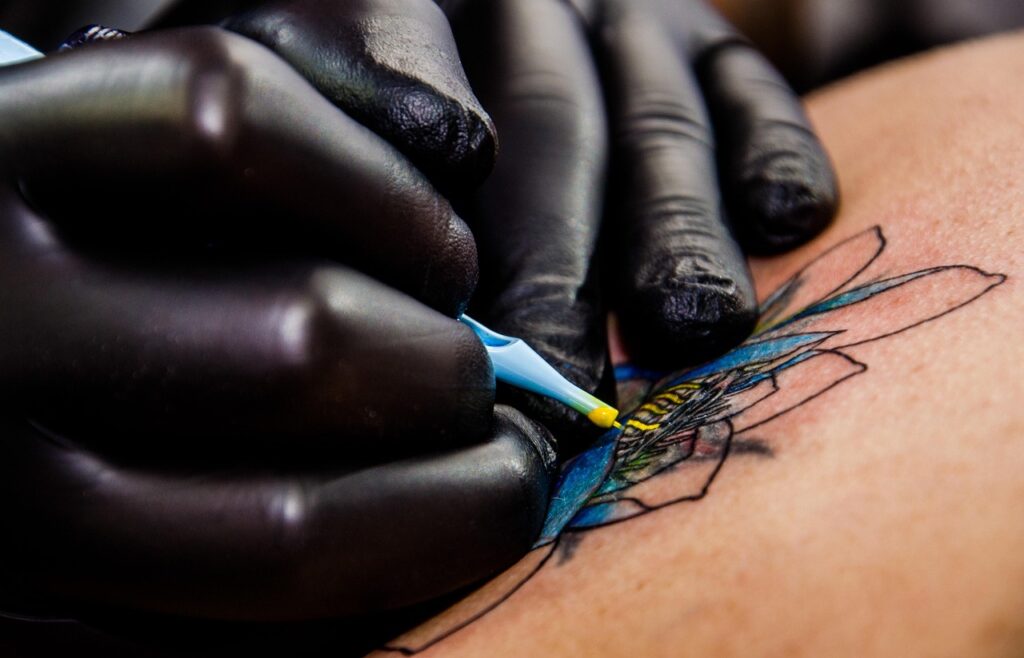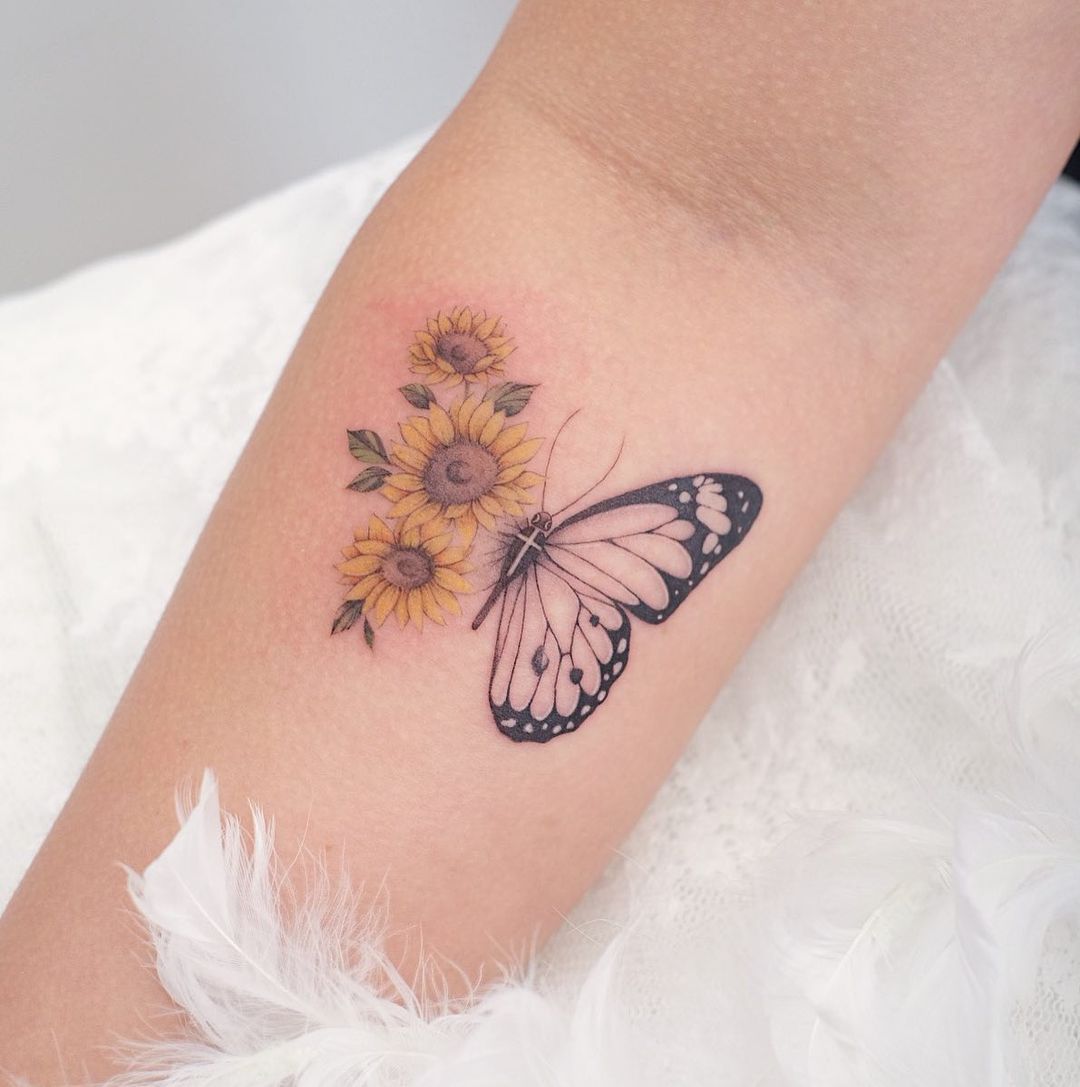
Ever woken up after a night out with a questionable decision staring back at you? We’ve all been there with a bad haircut or a dubious outfit choice, but imagine that feeling… permanently etched onto your skin! Tattoos are incredible forms of self-expression, art, and identity, but sometimes, what felt right in the moment can, over time, become a big old “oops.” Welcome to the wild world of tattoo regrets, where even the most meaningful ink can take an unexpected turn.
From ancient tribal marks to modern-day masterpieces, tattoos have a rich and varied history, serving countless purposes from rites of passage to declarations of love. But just like life itself, circumstances change, perceptions evolve, and sometimes, those once-cherished designs just don’t fit anymore. Whether it’s an accidental mark, a forced identifier, or a tribute to a love that faded, the reasons behind tattoo regret are as diverse and intricate as the designs themselves.
So, buckle up, because we’re taking a deep dive into 14 real-life (and historically documented) scenarios that perfectly illustrate why some ink just isn’t forever. While we can’t magically erase them here, understanding these stories sheds a whole new light on the permanent choices we make. Let’s explore some of the most compelling reasons why people find themselves wishing they could turn back time on their body art!
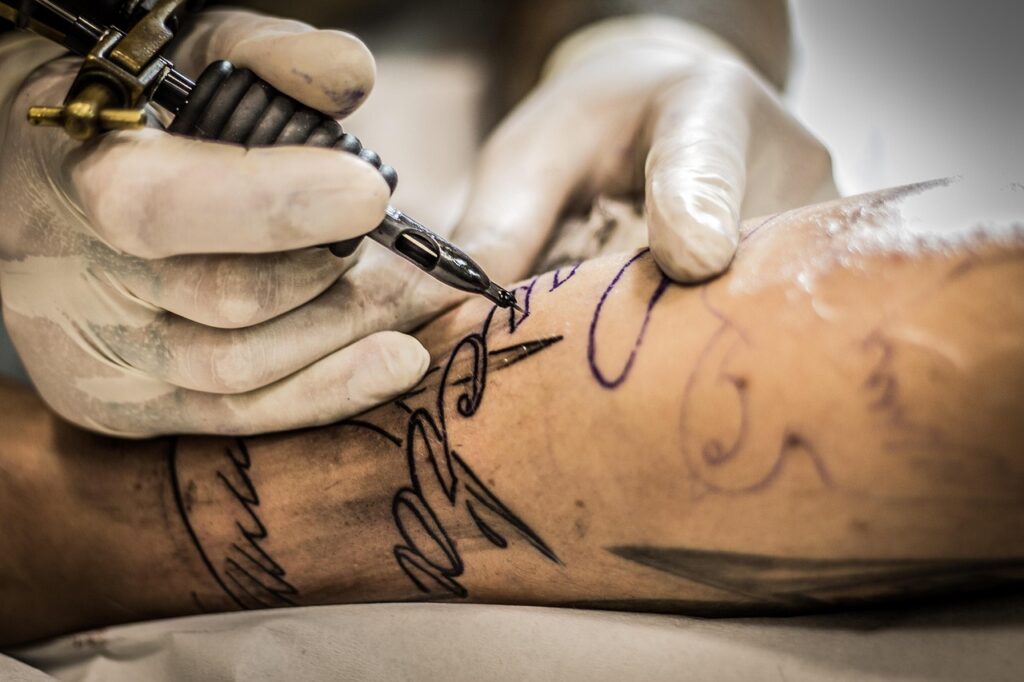
1. **Traumatic Tattoos: The Unwanted Souvenirs of Mishaps**Imagine just living your life, minding your own business, and then *BAM*! You’ve got a tattoo you never asked for. Sounds wild, right? Well, for some folks, that’s exactly how they ended up with ink they probably wish wasn’t there. We’re not talking about a drunken dare here; we’re diving into the world of traumatic tattoos, which are definitely a category of “oops” when it comes to body art.
So, what exactly *is* a traumatic tattoo? Picture this: you’re walking along, trip, fall, and suddenly a piece of asphalt gets embedded in your skin. Or maybe you’re a coal miner, and dust works its way into a cut. Yep, according to the American Academy of Dermatology, these accidental markings, where substances like asphalt or gunpowder get rubbed into a wound, are indeed considered a type of tattoo. They’re literally foreign pigments inserted into the dermis layer of the skin.
These aren’t exactly chosen designs, are they? These aren’t the intricate sleeves or meaningful symbols people spend hours planning. Instead, they’re often unwanted reminders of an accident or injury. Dermatologists might even call carbon-based ones a “carbon stain” instead of a traditional tattoo, but the outcome is the same: pigment permanently stuck under your skin, a true testament to an unplanned encounter.
Think about coal miners, for example, developing what are known as “collier’s stripes.” That’s coal dust finding its way into scratches and other small wounds, leaving a lasting mark. Or even more relatable, ever accidentally stabbed yourself with a pencil or pen and ended up with a little graphite or ink dot beneath your skin? That’s right, that’s essentially an accidental tattoo! It’s wild to think about, but these uninvited bits of ink are definitely in the “regret” column because, well, who wants a permanent reminder of tripping on the sidewalk?
And let’s not forget the amalgam tattoo! This happens when tiny bits of amalgam particles, often from dental fillings, get implanted into the soft tissues of your mouth, usually your gums, during a dental filling placement or removal. Talk about a surprise! While these aren’t on your forearm, they’re still permanent pigment under the skin, totally unplanned and likely undesired. These accidental markings are the ultimate example of ink that just wasn’t forever in a good way.
2. **Forcible Identification: Concentration Camp Numbers – A Horrifying Legacy of Unwanted Marks**Now, this next one is not just an “oops,” it’s a profound tragedy and a horrifying example of forced, unwanted body modification. Tattoos can be symbols of identity, but what happens when that identity is forcibly stripped away and replaced with a number, a mark of dehumanization? The Nazi practice of forcibly tattooing concentration camp inmates during the Holocaust is a chilling reminder of this dark reality.
Starting in the fall of 1941, the SS introduced this brutal practice at Auschwitz concentration camp. It wasn’t about personal expression; it was about identifying the bodies of registered prisoners in the camps, stripping them of their names and replacing them with cold, hard numbers. During registration, guards would tattoo each prisoner with a number, usually on the left forearm, but sometimes on the chest or stomach.
This wasn’t just a number; it was a symbol of immense suffering and loss. Of all the Nazi concentration camps, only Auschwitz put tattoos on its inmates. Prisoners found with tattoos in other camps upon liberation were presumably transported from Auschwitz by death march. The tattoo was the prisoner’s camp number, sometimes with a special symbol added, like a triangle for some Jews or the letter “Z” for Romani people. In May 1944, Jewish men received the letters “A” or “B” to indicate a particular series of numbers.
These tattoos represent the antithesis of personal choice and autonomy. They were forced upon individuals as part of a system designed to strip them of their humanity. For survivors, these marks became indelible, painful reminders of unimaginable trauma, making them perhaps the most profoundly regretted “ink” in history. The desire to remove such a mark, to reclaim one’s own skin and narrative, would be immeasurable.
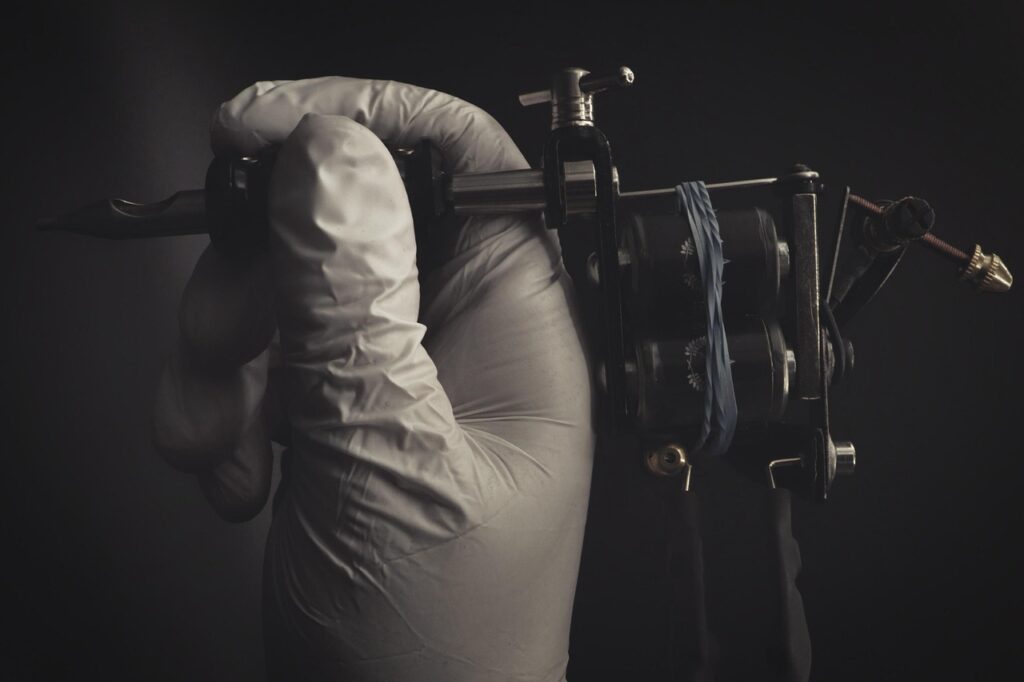
3. **Ancient Forcible Identification: Criminals, Slaves, and the Mark of Outcasts**Stepping back further in history, the concept of forced identification through tattooing wasn’t exclusive to the 20th century. For millennia, tattoos have been used as marks of punishment, ownership, or as identifiers for marginalized groups, turning what could be a form of art into a brand of shame that few would ever choose for themselves. Talk about an ancient “oops” moment!
Take ancient China, for example. As early as the Zhou dynasty, Chinese authorities employed facial tattoos as a punishment for certain crimes or to mark prisoners or slaves. And as late as the Qing dynasty, it was common practice to tattoo characters such as 囚 (“Prisoner”) on convicted criminals’ faces, both for identification or as punishment itself. Imagine living with that mark, a constant public declaration of your past transgressions. No wonder such tattoos would be a source of profound regret.
During the Roman Empire, gladiators and slaves were also tattooed. Exported slaves were tattooed with the words “tax paid,” essentially turning their bodies into receipts. And in an even more demeaning practice, it was common to tattoo “fugitive” (denoted by the letters “FUG”) on the foreheads of runaway slaves. These weren’t chosen symbols of status or love; they were permanent brands of forced servitude and societal condemnation.
Interestingly, the historical perception of these marks led to eventual bans. Owing to Biblical strictures against the practice, Emperor Constantine I banned tattooing the face around AD 330, and the Second Council of Nicaea banned all body markings as a pagan practice in AD 787. This shows how cultural and religious shifts could make previously accepted (or enforced) marks undesirable or even forbidden, leading to regret for those who bore them. These historical examples vividly illustrate how forced ink could lead to a lifetime of wishing you could just hit the undo button.
4. **Criminal Gang Identification: When Belonging Turns into a Trap**Moving into more modern times, but still deeply rooted in identifying with specific groups, criminal gang tattoos offer another compelling reason for regret. While these tattoos are chosen, they’re often chosen under specific circumstances of belonging, and leaving that group can make the ink a heavy burden. It’s a classic case of what seemed like a good idea at the time becoming a serious liability.
In the 21st century, people choose to be tattooed for various reasons, including to symbolize their belonging to or identification with particular groups. This includes criminal gangs, as seen in the realm of criminal tattoos. For individuals deeply embedded in such groups, these tattoos might signify loyalty, rank, or specific actions within the gang, acting as a badge of honor within that subculture.
However, what happens when someone decides to leave that life behind? That tattoo, once a symbol of belonging, instantly transforms into a scarlet letter, a permanent identifier of a past they desperately want to escape. It can complicate efforts to reintegrate into society, find employment, or even stay safe from former associates or rival gangs. The ink becomes a constant, visible link to a life they’re trying to outrun.
Law enforcement also uses these markings. Simple visual examinations, as well as more advanced digital recognition technologies, are employed to assist in identifying or providing clues about suspects or victims of crimes. So, a tattoo intended to solidify gang identity can just as easily become a tool for criminal investigation, adding another layer of potential regret for those trying to break free.
Therefore, while initially a choice, criminal gang tattoos often become profoundly regretted due to the lasting social stigma, personal danger, and obstacles they present to a future outside of that lifestyle. It’s a stark reminder that some affiliations, and the ink that represents them, are far from “forever” in terms of personal desire and peace of mind.

5. **Outdated Lifestyle Associations: When ‘Cool’ Turns into ‘Cringe’**Fashion trends come and go, but tattoos, well, they’re supposed to stick around. But what happens when the very lifestyle or subculture your tattoo proudly represented suddenly becomes outdated, stigmatized, or just plain… not you anymore? That’s where outdated lifestyle associations come in, making that once-edgy ink a source of mild embarrassment or full-blown regret. It’s like wearing last decade’s hottest trend, but it’s permanently on your skin!
Throughout the 20th century, tattoo art in most parts of the world was strongly associated with specific lifestyles. Notably, sailors and prisoners were heavily linked with tattoos. Think traditional sailor tattoos with anchors and mermaids, or the distinctive marks seen in prison tattooing. For a long time, these were defining characteristics, deeply tied to certain segments of society.
If you were a sailor or someone who embraced that rebellious image, these tattoos were badges of honor, symbols of your adventures or your defiance. However, societal perceptions are ever-shifting. What was once seen as rugged or authentic could, over time, be viewed through a different, often more negative, lens by the mainstream. This means an individual might later regret a tattoo that now carries an unintended connotation or stereotype they no longer identify with.
The context explicitly mentions this shift: “In the 20th century, tattoo art throughout most of the world was associated with certain lifestyles, notably sailors and prisoners… In the 21st century, people choose to be tattooed for artistic, cosmetic, sentimental/memorial, religious, and spiritual reasons, or to symbolize their belonging to or identification with particular groups, including criminal gangs… or a particular ethnic group or law-abiding subculture.” See that distinction? The shift highlights how a tattoo’s social meaning, and thus its wearer’s comfort with it, can evolve dramatically.
So, if your tattoo screams “20th-century sailor” but you’re a 21st-century tech entrepreneur, you might find yourself wishing that ink wasn’t so loudly proclaiming a past identity. It’s not necessarily about the tattoo itself being bad, but its association becoming misaligned with your current self and how you want to be perceived. This clash between old identity and new self-image is a prime ingredient for regret.

6. **Loss of Status Symbol: The ‘Exclusive’ Tattoo That Went Mainstream**Ever bought something super exclusive, only for it to be mass-produced a year later? Yeah, that sting of losing your unique status symbol is real. Now imagine that on your skin, permanently! Tattoos have historically been status symbols, but a major technological leap utterly changed that, causing some folks to undoubtedly look at their once-special ink with a touch of regret.
Before the late 19th century, getting a tattoo was often a complex, time-consuming, and expensive process. In Britain, by the 1870s, it had even become fashionable among some members of the upper classes, including royalty. In its upmarket form, it could be an expensive and sometimes painful process. So, having a tattoo meant you likely had the means and the social standing to acquire one – a true mark of distinction.
Then came the game-changer: the invention of the electric tattoo machine. This revolutionized the tattooing world! The machine made the tattooing procedure both much easier and cheaper. This sudden accessibility meant tattoos were no longer exclusive to the elite. They became affordable for all socioeconomic classes, leading to a dramatic shift in their perceived value and symbolism.
With this shift, the status symbol a tattoo previously held – a representation of wealth and exclusivity – dropped off. Instead, it became a mark typically seen on rebels and criminals. Can you imagine being one of those upper-class individuals who got a tattoo when it was chic and expensive, only for it to quickly become associated with entirely different, less desirable social strata? That’s a serious potential for regret right there, as your once-elite mark suddenly lost its luster and gained new, perhaps unwelcome, connotations.
This transformation from an expensive, upper-class fashion statement to a widespread, more rebellious symbol shows just how much the social currency of ink can change. For those who got them for status, the rapid democratization of tattooing certainly meant their “forever” symbol wasn’t as exclusive as they’d hoped, leaving them with an unexpected sense of “oops.”
7. **Amateur Tattoos: When DIY Goes Awry on Your Skin**Ah, the allure of a spur-of-the-moment decision or a budget-friendly option! We’ve all been tempted, but when it comes to tattoos, cutting corners can lead to some seriously permanent “oops” moments. Amateur tattoos are a prime candidate for regret, often because they fall far short of the desired artistic vision or professional standards. It’s like trying to bake a gourmet cake with a blurry recipe and no measuring cups – the result is rarely what you pictured.
The American Academy of Dermatology, in its distinction of five types of tattoos, specifically lists “amateur tattoos” alongside professional ones. This isn’t just about who did it, but often about the quality, safety, and ultimately, the lasting satisfaction of the tattoo itself. While some amateur work can be charmingly rustic, much of it can be uneven, poorly designed, or just plain wonky, leaving the wearer with a visual reminder of a regrettable choice.
Think about it: professional tattoo artists spend years honing their craft, understanding skin, ink, and proper sterilization techniques. An amateur, on the other hand, might be working with limited tools, shaky hands, or an incomplete understanding of how ink settles in the dermis. The result can be blurry lines, faded colors, blowouts, or designs that simply don’t look anything like what was intended. These imperfections are often glaring, making the tattoo a constant source of frustration and self-consciousness.
Beyond aesthetics, there are also health risks associated with amateur tattooing. Without proper regulation and health risk certification, and without strict adherence to hygiene protocols, infections are a serious concern. The context clearly states that “tattooing is regulated in many countries because of the associated health risks to client and practitioner, specifically local infections and virus transmission.” An amateur setup often lacks the sterilized equipment and practices necessary to avoid these dangers. Imagine getting an infection on top of a bad tattoo – that’s a double whammy of regret!
So, whether it’s the wonky drawing of a beloved pet, the misspelled word that seemed so profound at 3 AM, or the lingering fear of an infection, amateur tattoos frequently top the list of body art people wish they could magically undo. They are perhaps the most common, and certainly relatable, type of tattoo regret because the desire for a beautiful, safe, and professional piece of art often clashes dramatically with the reality of a hastily chosen, DIY mark. It’s a permanent lesson in the value of professionalism and thoughtful decision-making!
Alright, if you thought the first seven reasons for tattoo regret were a wild ride, buckle up! Because we’re not done delving into the depths of ink-related ‘oops’ moments. From the fleeting nature of beauty trends to the ever-shifting landscape of personal growth and relationships, sometimes even the most carefully chosen tattoos can turn into a permanent head-scratcher. Let’s explore the next batch of reasons why some ink just isn’t forever, and what they teach us about living with our body art!
8. **Cosmetic Tattoos: When Beauty Trends Fade, But the Ink Doesn’t**Ever heard of permanent makeup? It sounds like a dream come true, right? Waking up with perfect eyebrows, a subtle lip liner, or eyeliner that just *stays* put, no matter what your day throws at you. The context tells us that permanent makeup uses tattoos to create long-lasting eyebrows, lips, eyes, and even moles, often with natural colors or diverse pigments to mimic traditional makeup. It’s designed to save time and ensure you always look effortlessly polished. Sounds amazing, right?
But here’s the kicker: beauty trends are notoriously fickle. What’s in vogue today might be utterly cringe-worthy next year. Think about those super-thin eyebrows from the ’90s or the overly defined lip lines of the early 2000s. Now imagine those trends, but permanently etched onto your face! The desire for a perfectly sculpted brow or a perpetually rosy lip can quickly turn into regret when your personal style evolves, or when the ‘natural’ look suddenly means something entirely different.
Even scalp micropigmentation, a technique tattoo artists use to create the illusion of hair on the scalp for those experiencing hair loss, can fall into this category. While incredibly helpful for mimicking a closely shaved head or adding density, what if hair transplant technology vastly improves, or the individual decides to grow out their hair? The permanent dots, while subtle, might not align with their new aesthetic or personal preference. It’s a prime example of how even functional cosmetic tattoos can become regrettable when life’s currents shift.
The initial allure of convenience and flawless appearance can blind us to the long-term commitment. A perfect cosmetic tattoo requires not just a skilled artist, but also an enduring trend that might simply not exist. So, while permanent makeup can be a fantastic solution for many, it also presents a very real opportunity for an ‘oops’ moment when yesterday’s perfect pout doesn’t quite match today’s vibe.
9. **Medical Identification Tattoos: A Lifesaving Mark That Can Bring Regret**Tattoos aren’t always about aesthetics or personal expression; sometimes they serve vital functional purposes. The context mentions medical tattoos being used for things like ensuring instruments are properly located for radiotherapy, creating realistic areolas in breast reconstruction, conveying medical information like blood group or conditions, or even identifying Alzheimer’s patients. These are powerful, often essential uses of ink, offering solutions that genuinely improve quality of life or safety.
However, even these functional marks can become sources of profound regret under certain circumstances. Imagine getting a tattoo of your blood type, which seems perfectly logical for emergencies. But what if that information becomes associated with a dark historical period or group? The context highlights a chilling example: “SS blood group tattoos (German: Blutgruppentätowierung) were worn by members of the Waffen-SS in Nazi Germany during World War II to identify the individual’s blood type.” After the war, this seemingly neutral medical identifier was taken as evidence of being part of the Waffen-SS, leading to potential arrest and prosecution. For many, this meant a desperate, painful attempt to remove the tattoo, often by “shoot[ing] themselves through the arm with a gun” to obscure the mark.
This isn’t just about changing personal preference; it’s about a tattoo’s meaning being dramatically twisted by external events, creating an unbearable burden for the wearer. Similarly, while tattoos can be used to cover conditions like vitiligo, what if the person later embraces their natural skin or the cover-up itself fades unevenly? Or what if a medical condition improves, leaving a permanent reminder of a past ailment that the wearer would rather forget? These scenarios turn what was intended as a helpful or even life-saving mark into a painful, unwanted ‘oops.’
The intention behind medical tattoos is always good, aiming to serve a practical purpose. Yet, as the historical example of the SS blood group tattoos starkly illustrates, the long-term societal and personal impact of such permanent identifiers can be unpredictable and devastating. It’s a sobering reminder that even the most pragmatic ink choices are not immune to regret, especially when history takes an unexpected, and often cruel, turn.
10. **Personal Transformations: When Your Ink No Longer Reflects Who You Are**Life is a journey of constant evolution, right? We grow, we change, we discover new parts of ourselves. What felt incredibly important at 18 might seem utterly irrelevant at 30, and what resonated deeply in one phase of life might feel completely alien in the next. Tattoos, by their very nature, capture a moment in time, a belief, an identity. But what happens when *you* move on, and your tattoo stays stuck in the past?
This is a huge category of regret, where people look at their once-cherished ink and realize it no longer aligns with the person they’ve become. Maybe it’s a quote that once inspired them but now feels cliché, a symbol of a youth movement they’ve outgrown, or a complex design representing a philosophy they no longer embrace. The tattoo isn’t ‘bad’ in itself; it’s simply a misrepresentation of their current self. It’s like wearing an old favorite band t-shirt to a black-tie event – it just doesn’t fit anymore.
The context hints at this by stating that in the 21st century, people get tattooed for “artistic, cosmetic, sentimental/memorial, religious, and spiritual reasons, or to symbolize their belonging to or identification with particular groups.” The emphasis on “sentimental/memorial” and “religious, and spiritual reasons” shows how deeply personal and identity-bound these marks can be. When those sentiments shift, or spiritual paths diverge, the tattoo becomes a monument to a former self.
This can be particularly challenging because these tattoos were often chosen with great thought and intention. The regret isn’t born of a mistake, but of growth. It’s a bittersweet ‘oops’ moment, acknowledging that while the tattoo served a purpose at one point, it now feels like an ill-fitting badge from a life chapter that’s long closed. Reconciling this internal conflict often leads people down the path of seeking removal or cover-ups, striving to align their outer self with their inner truth once more.
Read more about: Smart Spending for Remote Success: Unpacking 12 Essential Work-From-Home Tools and Their True Costs

11. **Relationship Tattoos: Forever Love, or Just Forever Ink?**Oh, the classic relationship tattoo! Who hasn’t seen (or maybe even gotten) the names of partners, matching symbols with a best friend, or a shared inside joke permanently etched onto skin? It feels so romantic, so committed, so *forever* in the moment of blazing passion or unbreakable bond. Tattoos, after all, can be “pledges of love,” as the context explicitly states. In a world full of fleeting moments, ink promises permanence, making it an appealing choice for expressing deep connections.
But here’s the unavoidable truth about human relationships: they are complex, messy, and sometimes, they end. And when they do, that beautiful symbol of eternal love or friendship can quickly transform into a painful, unwanted souvenir. Imagine bumping into an ex years later, and still having their name emblazoned on your arm, or trying to explain a faded, half-covered heart to a new partner. It’s not just awkward; it’s a constant, visible reminder of a connection that’s no longer there, often bringing up feelings of sadness, resentment, or embarrassment.
The regret here isn’t about the artistic quality of the tattoo, but about the story it tells – a story that has changed its ending. While some people embrace these marks as a part of their personal history, many find them to be a heavy burden, hindering new relationships or simply serving as a persistent, unwelcome memory. The desire to move on, emotionally and physically, often clashes dramatically with the indelible mark of a past affection.
This particular brand of tattoo regret is incredibly common and relatable precisely because it touches on the unpredictable nature of human connection. What felt like a profound and immutable declaration of love in the heat of the moment can become a stark illustration of life’s impermanence. It’s a poignant ‘oops’ moment, teaching us that while love might feel eternal, tattoos truly are, and sometimes they outlast the very bonds they were meant to celebrate.
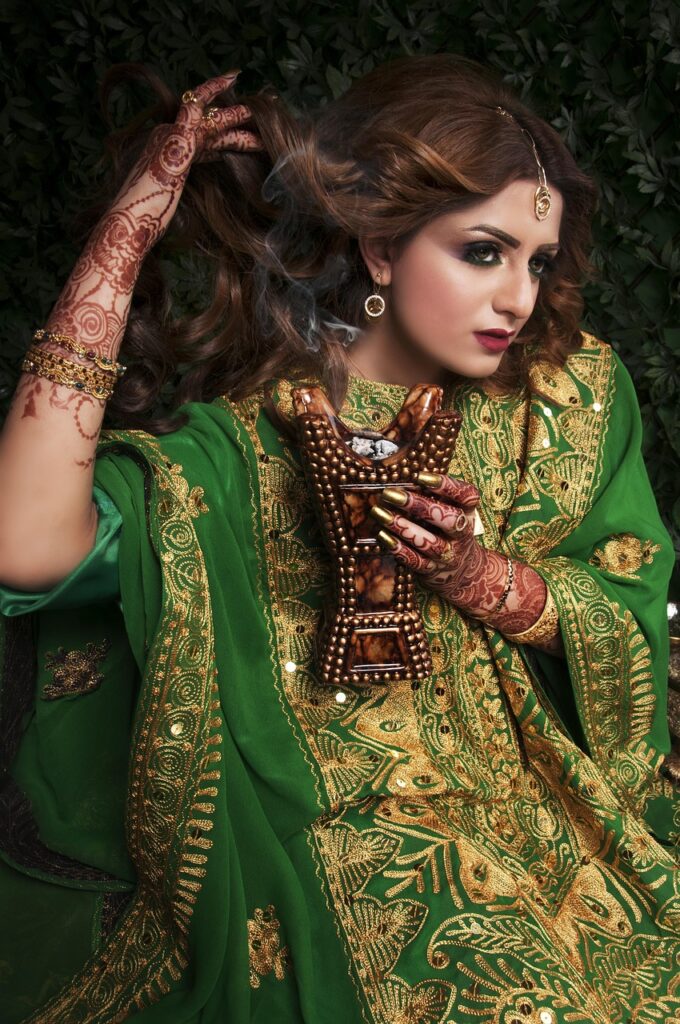
12. **Misspellings and Poor Execution: The ‘Oops!’ That Stays on Your Skin**We all make mistakes, but usually, those mistakes aren’t branded onto our bodies for all eternity. Enter the terrifying world of misspelled tattoos, wonky lines, or designs that just didn’t quite turn out how you envisioned. While “amateur tattoos” were covered in Section 1 for general lack of skill, this category zeroes in on outright errors or significant deviations from expectation, even in a professional setting. It’s the kind of ‘oops’ that makes you want to crawl into a hole and never come out.
Picture this: you painstakingly choose a meaningful quote, ensuring every word is perfect. You tell the artist exactly what you want. But somewhere along the line, a letter is transposed, an apostrophe goes missing, or a word is completely misspelled. “No Regrets” accidentally becomes “No Regerts.” Or perhaps the design itself, while technically professional, simply doesn’t capture the essence or quality you were hoping for. The lines are shaky, the shading is uneven, or the colors bleed, making a beautiful concept look muddy. These aren’t just minor flaws; they’re glaring imperfections that can instantly transform a dream tattoo into a nightmare.
The frustration of a poorly executed or misspelled tattoo is immense. Unlike a bad haircut that grows out or a fashion faux pas that can be tossed, this error is a permanent fixture. It’s a constant, visible reminder of something that went wrong, leading to feelings of deep self-consciousness, embarrassment, and anger towards the artist or even oneself for not noticing sooner. The desire to hide it, cover it, or remove it becomes incredibly strong.
Correcting these errors can be a costly and painful process, often requiring multiple laser removal sessions or extensive cover-up work that might not fully achieve the desired outcome. It’s a powerful lesson in diligence – double-checking everything, researching artists meticulously, and confirming the stencil down to every last detail. Because when it comes to ink, a small oversight can lead to a lifetime of “Oh, wow, that’s not right!” regret.
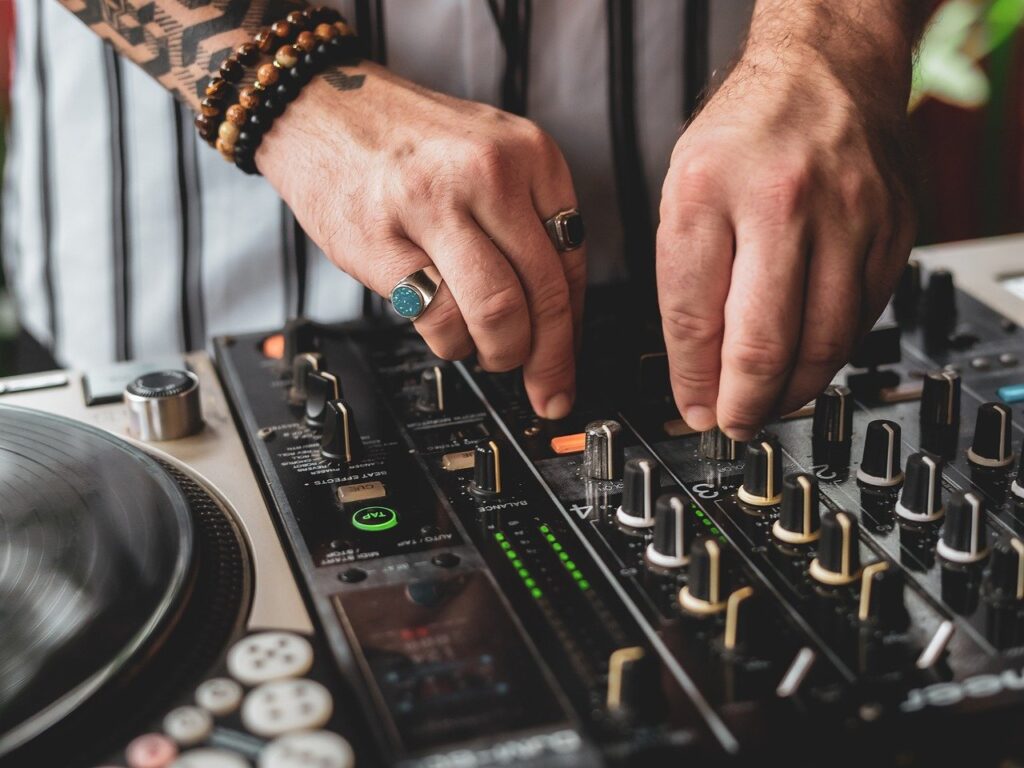
13. **Unforeseen Placement Issues: When Your Tattoo’s Location Becomes a Liability**Choosing the perfect spot for your tattoo is almost as important as choosing the design itself. What might seem like a cool, edgy place to get inked in your twenties could become a serious professional or social hurdle later in life. This is the realm of placement regret, where the location of your tattoo, rather than the design itself, becomes the source of a major ‘oops’ moment. It’s about a mismatch between your ink and your life’s evolving demands.
For many, highly visible tattoos, especially on the face, neck, or hands, can impact career prospects. While societal acceptance of tattoos has grown significantly – with the context noting that “since the 1970s, tattoos have become a mainstream part of Western fashion, common both for men and women, and among all economic classes and to age groups from the later teen years to middle age” – some professions and industries still maintain conservative views. What felt like a bold statement of individuality could become an obstacle to landing a dream job or advancing in a chosen field.
Beyond professional concerns, there are social implications. Some people simply grow tired of the constant visibility, the endless questions, or the occasional judgmental stare. What started as a proud display can become a source of irritation or self-consciousness. Covering up a large, prominently placed tattoo for formal events, job interviews, or even daily life can be a hassle, requiring specific clothing or heavy makeup.
Then there’s the more personal side: tattoos on areas that stretch or change significantly due to weight fluctuations, pregnancy, or aging can distort the artwork, leading to regret about the aesthetic outcome. The perfect placement needs to consider not just today’s body, but how it might change over the decades. It’s a subtle but significant form of regret, highlighting how even a perfectly designed tattoo can cause problems if it’s not situated thoughtfully for the long haul.
14. **The Inevitable Fading & Aging: Time’s Unkind Touch on Your Ink**Here’s a truth bomb for anyone considering permanent body art: tattoos aren’t immune to the relentless march of time. Just like everything else, they age, they fade, and they change. While ink is inserted into the dermis layer of the skin, where “Its presence there is stable, but in the long term (decades) the pigment tends to migrate deeper into the dermis, accounting for the degraded detail of old tattoos.” This means that even the most vibrant, crisp tattoo will eventually start to blur and dull, leading to a kind of universal ‘oops’ moment.
Think about it: that intricate, delicate design you loved? Over the years, lines can thicken, colors can lose their punch, and fine details can simply merge into a hazy blob. Factors like sun exposure, the quality of the ink and artist, the type of skin, and general wear and tear all contribute to this natural degradation. A tattoo that once looked sharp and bold might eventually look muddy, indistinct, or simply tired, just like an old photograph fading in the sun.
The regret here often comes from the stark contrast between the tattoo’s original glory and its aged reality. It’s not about disliking the design or meaning; it’s about the artwork simply not holding up over time. People may find themselves constantly comparing their current ink to old photos, wishing they could recapture its initial vibrancy. This can lead to a desire for touch-ups, re-inking, or even complete cover-ups, all in an effort to restore what was lost to the passage of time.
Ultimately, the fading and aging of tattoos represent the most fundamental truth about permanence: nothing truly lasts forever, not even ink beneath the skin. It’s a humbling, yet universal, ‘oops’ moment for many tattoo enthusiasts, reminding us that even the most meticulously chosen and expertly applied designs will eventually bear the marks of a life well-lived – and the undeniable effects of time. It’s a permanent reminder that even ‘forever’ has an expiration date when it comes to body art.
So there you have it, 14 compelling reasons why some tattoos become regrets, proving that while ink might be permanent, our feelings about it often aren’t. From accidental marks to symbols of love that faded, or trends that crashed, each story reminds us to approach body art with thoughtful consideration. Because even the coolest tattoo can become a big, fat ‘oops’ when life throws us a curveball, or simply when time marches on. But hey, at least now you’re armed with all the wisdom to make your own ink choices wisely (and maybe avoid a few future regrets!).


